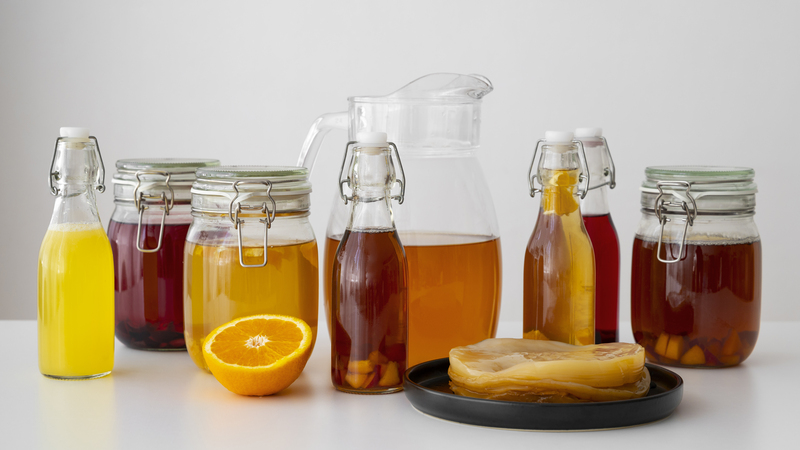Honey is one of those natural products that lends a special touch to any dish. But have you ever stopped to think why some honey might be golden colored and mild and some dark and strong? In this guide, we will discuss what makes each honey variety different.
How Nectar Source Impacts Honey
One major factor determining the flavor and color of honey is the type of flowers from which nectar has been harvested.
Light-colored honey comes from nectar sources like acacia, clover, and orange blossoms. Most of these honey have a milder flavor profile and are less sweet compared to other ingredients. For example, acacia honey is almost colorless and transparent, with a delicate taste. Being extra subtle in flavor, it’s great for tea or yogurt.
Dark-coloured Honey varieties, such as manuka and heather are darker with a more enhanced flavour profile.
The Impact of Flower Variety on Flavour Profiles
The type of flower where the nectar is gotten greatly impacts the color and taste of honey varieties. For instance, lavender honey has a taste that is a bit flowery with a hint of lavender, while eucalyptus honey gotten from eucalyptus tree, has a subtle menthol taste.
Interestingly, even plants of the same species will subtly differ in honey when other conditions, such as soil and climate, come into play.
The Role of the Beekeeping Process
Beyond the source of nectar, methods employed by apiarists also help to determine the final flavor and color of honey. For Instance, raw honey extracted, filtered, but not heated retains more of its natural flavors and nutrients. While processed honey is usually pasteurized, which may lighten the color and mellow the flavor. Even though pasteurization does extend the shelf life, this process can remove some of the characteristics found in raw honey.
Some honey in retail stores are a mixture of various kinds of honey to give a varied taste and color. While these blends may be good, they lack the distinctiveness of honey gotten from a single origin.
Monofloral vs. Polyfloral Honey
Monofloral honey is those in which the greatest part of the nectar is taken from a single species of flower, which generally results in a more consistent flavor and color. Examples include lavender and honey.
Polyfloral honey, sometimes called wildflower honey, comes from nectar collected from a variety of flowers. So, one jar might be light and sweet, another could be dark and tangy. This diversity is part of the charm of polyfloral honey since every batch presents some sort of snapshot of what flowers are in bloom at that particular time and place.
Other Honey Flavour Profiles
Floral Honey: These honey are characterized by their light, sweet taste and subtle floral aromas.
- Lavender Honey: Renowned for its calming properties, lavender honey boasts a delicate floral flavor with a hint of sweetness.
- Orange Blossom Honey: This honey has a bright, citrusy flavor with a touch of sweetness.
- Clover Honey: A classic honey variety, clover honey offers a mild, sweet flavor with a subtle floral note.
Fruity Honeys: Honeys produced from nectar collected from fruit trees often exhibit fruity flavors.
- Eucalyptus Honey: With a unique, slightly tangy taste, eucalyptus honey has a refreshing, fruity aroma.
- Blueberry Honey: This honey has a sweet, fruity flavour with a hint of tartness.
- Raspberry Honey: Raspberry honey offers a sweet, tart flavour with a delicate berry aroma.
Dark Honeys: These honeys are typically darker in colour and have a stronger, more complex flavour.
- Buckwheat Honey: Buckwheat honey has a bold, earthy flavour with a touch of sweetness.
- Manuka Honey: Known for its potential health benefits, manuka honey has a distinct, slightly bitter taste with a unique aroma.
- Wildflower Honey: This honey is a blend of various floral sources, offering a complex flavour profile with a hint of earthiness.
Specialty Honeys: Some honeys are produced from unique nectar sources, resulting in distinctive flavours.
- Pine Honey: Pine honey has a slightly resinous flavour with a touch of sweetness.
- Acacia Honey: Acacia honey is renowned for its light, delicate flavour and clear appearance.
- Avocado Honey: This honey has a creamy texture and a slightly sweet, nutty flavour.
Health Benefits of Honey
Antioxidant Power: Honey contains antioxidants like polyphenols, which combat harmful free radicals and protect cells from damage.
Antibacterial Properties: Honey’s acidic environment and high sugar content create an inhospitable environment for bacteria, making it a potential aid for wound healing.
Cough Relief: Honey’s soothing and demulcent properties can help soothe irritated throats and reduce cough symptoms, especially in children.
Improved Heart Health: Some studies suggest that honey may help lower blood pressure and cholesterol levels, contributing to overall heart health.
Digestive Aid: Honey can help promote digestion and relieve symptoms of gastrointestinal issues like diarrhea.
Energy Boost: Honey provides a quick source of natural energy, making it a suitable alternative to refined sugars.
Sleep Aid: Some people find that consuming honey before bed can help regulate sleep patterns and promote better rest.
Skin Benefits: Honey’s antibacterial and moisturizing properties can be beneficial for skin health when used topically.
Immune Support: Honey contains vitamins and minerals that support a healthy immune system.
Weight Management: When consumed in moderation, honey can be a healthier alternative to artificial sweeteners and aid in weight management.
Final Thoughts
The next time you take that jar of honey down from the shelf, think about the process it has undergone, and the journey it has made from floral sources in a certain region, to the work put in by a beekeeper. In every drop of honey, there is this elaborate play of nature and human craft that takes this sweetener and turns it into probably one of the most valued foods in our kitchens.
